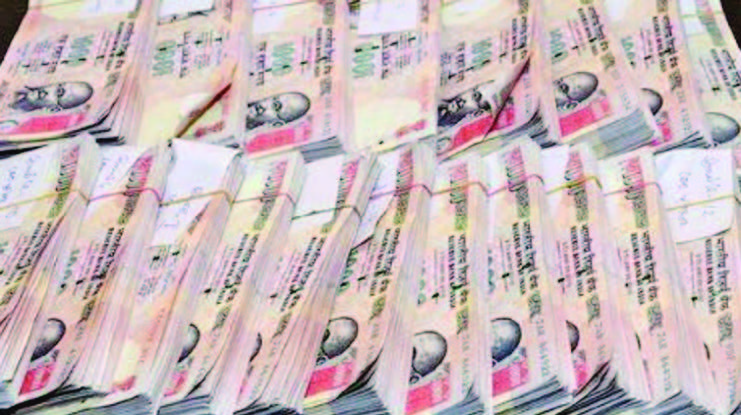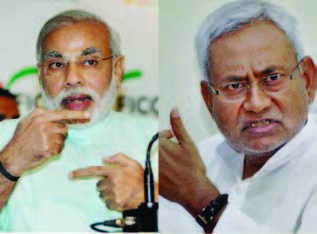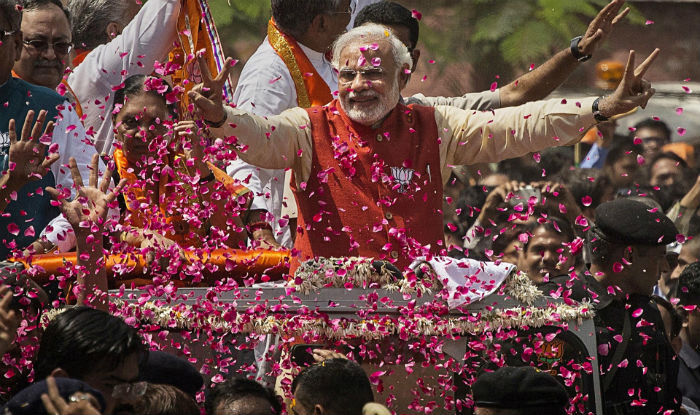
The August 14, 2014 issue of the The Hindu carried a feature indicating that the National Institute of Public Finance and Policy (NIPFP) had submitted to the Finance Ministry, in December 2013, a confidential report on estimates of black money held in India and abroad by Indians. The report apparently suggested that – driven largely by the higher education sector, real estate transactions, and incomes from mining – the size of the black economy could be as large as three-fourths the size of the country’s Gross Domestic Product. The then Finance Minister, we are told, did not place the report in Parliament. As far as one can ascertain, neither has the present Finance Minister.
In the light of this record, it is hard to stomach the notion that the Prime Minister’s dramatic address to the nation on the evening of November 8 is indeed, as he claimed, “…a fight against black money (and) corruption…”. It is even harder to understand how the measures announced (such as they are) constitute an endorsement of the advertisement that “this government is dedicated to the poor.” The specific measures, as it happens, are rather short on detail and long on rhetoric. From what one can understand, the scourges of “black money”, terrorist funding, and the circulation of counterfeit high-denomination currency notes (Rs 500 and Rs 1,000 notes) are to be effectively countered by abruptly declaring that these currency notes are no longer legal tender. However, these currency notes can be exchanged, within a finite period, for newly-minted higher-denomination notes in banks by declaring one’s holdings of these notes, after identifying oneself by means of generally accepted documents of identity, such as PAN cards, Aaadhaar cards, ration cards, and so on.
There are a number of difficulties one faces in coming to grips with the objectives of this scheme. First, it is hard to know what to make of the Prime Minister’s assurance that “your money will remain yours. You need have no worry on this point.” Taken literally and at face value, this suggests that no one runs the risk of actually being questioned about possession of suspiciously large quantities of large-denomination notes. In such an event, we are speaking of “fighting black money” through the declaration of a general amnesty which converts ‘black’ into “white” by simple fiat, that is, by the exchange of old notes for newly minted ones.
But surely, this cannot be quite right – for then why should anyone hesitate to declare all their high-denomination notes? Apparently, after all, one does need to “worry on this point”. Presumably, people with unnaturally large quantities of high-denomination notes ought to be genuinely worried about identifying themselves as being in possession of such quantities, since their identities will, one imagines, be passed on by banks to the income-tax authorities. But then, what is an unnaturally large quantity? Is there a threshold level? Is that level variable across people or the same for all? In either case, how is it to be identified? And if one is found with holdings in excess of the threshold, presumably there will be a penalty levied on the offender. What is the rate of this penalty?By what principles is it to be determined?There is no clarity (nor, as far as one can tell, information) on these questions. If there is, indeed, no cause for “worry”, then we are speaking of an amnesty; if there is cause for worry, then worried people will simply not declare their ‘excess’ holdings of large-denomination notes, which will, effectively, have been just straightforwardly driven into non-existence. There is no question, in such a scheme, of recovering unaccounted money, money owed to the state by defaulting on legitimate taxes.
There is a further complication to reckon with here. Bank account-holders with “small” or “below-threshold” holdings of high-denomination notes could “safely” exchange their low-denomination notes for “high” notes held by potential offenders, for a premium on their “low” notes. As an “honest” fellow in possession of high-denomination notes well in deficit of the specified threshold, I am in a position (if I should so choose) to, for example, exchange four 100-rupee notes, one 50-rupee note, one 20-rupee note, and one 10-rupee note (Rs 480 in all) for a 500-rupee note held by a fellow who is desperate to jettison his high-denomination notes. I can keep on doing so till I reach the threshold level. (The rate of exchange would depend on the threshold and the penalty specified by the monetary authorities.) The demonetization scheme under review could thus lead to the emergence of a nice little market for low-denomination notes.
Is this supposed to be an attack on the black economy? The unaccounted economy is a composite of holdings of under-valued real estate; over-invoicement and under-invoicement of imports and exports respectively; hawala transactions; holdings of gold; possession of consumer durables; and numbered accounts in banks in overseas tax-havens. The drama of “the fight against black money” which we are invited to witness (and digest) is the heroic battle against that proportion of “excessive” high-denomination notes in all currency notes which are held as a proportion of all forms in which unaccounted wealth and income are held in this country!
What of the costs of this demonetization scheme? Consider the hardship to which honest people are being put in the cause of this drama. Ordinary people having to queue up in banks to declare and exchange their (meagre) high-denomination notes for new ones; poor people without bank accounts in unhappy possession of high-denomination notes (we are speaking of a country with a low banks/population ratio); the stresses and strains of a banking system which is already under duress and now has to cope with the sudden pressure of dealing with the demonetization scheme; the distinct possibility that low-denomination notes may not be available with banks in sufficient quantities to deal with the demand for them; the requirement that very large numbers of blameless common people have to be inconvenienced, if not harassed, in order to sustain a poorly-thought out scheme of dubious benefit.
What we are dealing with is a supposed implementation of an unfulfilled election promise on combating the problems of the unaccounted economy; and possibly an attempt at curtailing the distribution of money to the electorate by opposition parties in a time of important Assembly elections. It is hard to see this farcical demonetization drama as anything like a serious and sincerely-intended “fight against black money and corruption”, even if we, the people, are invited to feel privileged that we are being asked to make sacrifices in the cause of this splendid and self-denying initiative.
Post-Script: After this piece was written, it has been clarified that the threshold is Rs 10 lakh, beyond which an individual is subject to investigation; if found defaulting on tax, the tax, together with a 200 per cent penalty, will be recovered from the offender.
(The author is a well- known economist)





Be the first to comment